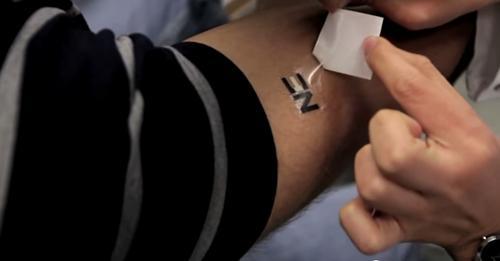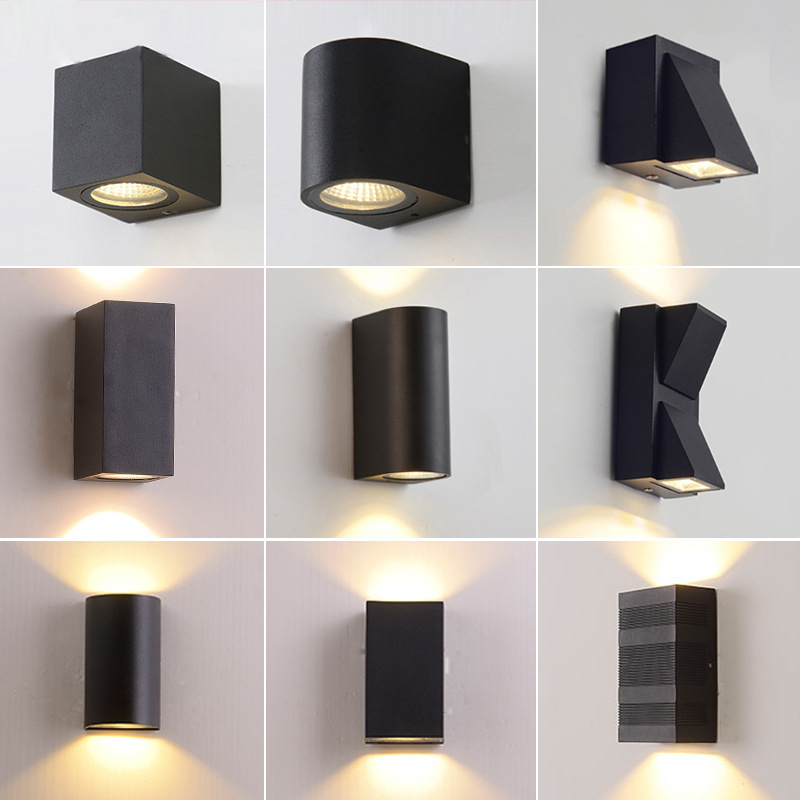Wearable devices have become a very popular technology product, but the problem of the life of such products has become a problem that many scientists and manufacturers have to solve.
1. Frictional static electricity is converted into usable energy
Recently, a research team from the National University of Singapore has developed a flexible, small-volume device that converts static electricity generated by friction into usable energy. This device touches the surface of the skin for a while, while the other end is covered with a layer of gold silicon film. At the same time, the two ends of the device have columnar silicone rubber, which is designed to provide greater power output while allowing a larger area to contact the skin.

The research team presented its research at the 2015 IEEE MEMS conference and demonstrated that the generated electrical energy can be used to power some devices. By attaching this device to the tester's arms and throat, 7.3v and 7.5v voltages can be generated by clenching the fist and speaking, respectively. If the toilet paper is continuously rubbed, it can generate a voltage of up to 90v, which can be used directly to illuminate the LED light source. The team plans to develop a larger battery in the future so that it can more fully utilize the electrical energy from the friction of human skin.
In fact, in addition to this friction-powered battery, there have been many other forms of research in the world. For example, a new type of tattoo can convert human sweat into electricity, or turn our chin into a "generator" through special headphones. It seems that there are many alternative ways to solve the problem of power supply for future wearable devices.
2. New tattoo: sweat is converted into electricity
On August 16th, Joseph Wang, a researcher at the University of California, San Diego, invented a temporary smart tattoo that can generate electricity through sweat and one day to power mobile phones and other wearable devices.

This tattoo will stick to your skin, detect the level of chemical lactic acid in the sweat, and then use this lactic acid to make a micro fuel cell. When we exercise to exhaustion, the muscles usually have a burning sensation, which is related to the accumulation of lactic acid. For muscle, lactic acid is a waste and an end point of metabolism.
Exercise physiologists have been able to detect levels of lactic acid in human muscle or blood. When lactic acid was released from sweat, new sensing technology was born. Wang's smart tattoo has a sensor that attracts electrons in lactic acid, which produces electricity. Wang estimates that 70 microwatts of electricity can be produced per square centimeter of skin. Researchers have added batteries to lactic acid sensors to capture and store currents to form so-called biofuel cells.
No matter how much you sweat or walk, the more you sweat, the more lactic acid is produced in your body, which means more electricity can be stored in the battery. Today, this smart tattoo can only produce very little power, but researchers hope that this biofuel cell will one day generate enough power to power smart watches, heart rate monitors or smartphones.
Motorola has also created a temporary tattoo that can be unlocked for mobile phones. Maybe you have the necessary accessories for your next mobile phone, you may only need a small piece of ink on your body.
3. Solar battery
Solar cells are not just large applications such as power plants and street lights. We will see micro-versions of solar cells that provide enough energy for wearable devices. Solar watches that don't require batteries have been around for many years, and a solar watch recently developed by Energy BioNIcs not only meets their needs, but also powers other devices.
One of the major problems with using solar cells on wearable devices is that the device needs light to generate electricity. Once the light is blocked, such as under the sleeves, there is no way to generate energy. But from another perspective, this also makes solar cells a good choice for smart clothing, and flexible batteries can even be sewn directly into the fabric.
Traditional solar cells are designed for sunlight because the intensity of sunlight is much higher than that of indoor light sources. In order to solve this problem, some new materials are being developed to generate electricity indoors, and the efficiency is greatly improved.
4. Thermoelectric collection
Thermoelectric collection is the conversion of thermal energy into electrical energy. The physical principle used is called the Seebeck effect. The Peltier element adds a pair of specific semiconductors that generate current as long as a temperature difference occurs.
For wearable devices, the body that constantly dissipates heat can act as the hot end and the environment becomes the cold end. The amount of energy produced depends on the delta value between the high and low temperatures. Peltier elements can collect a lot of energy and thus have great potential for devices that are close to the skin and have high energy requirements. One of the great advantages of thermoelectric recovery is the constant flow of energy, whether indoors or outdoors, during the day or night.
5. Piezoelectric collection
Piezoelectric collection converts mechanical energy into electrical energy. In the piezoelectric element, due to the piezoelectric effect, a small current is generated as long as the element is manipulated by mechanical force. In applications for wearable devices, piezoelectric elements are typically designed to generate electricity by vibrations caused by walking, breathing, or movement of the hand.
Piezoelectric collection produces relatively little energy, which limits its application to devices that consume less power and body parts that are always in motion. The polymer piezoelectric fibers that scientists are developing are flexible and breathable, can be placed in fabrics, and have a wide range of applications.

6. Optimize the power storage and consumption of wearable devices
Energy collection is only one aspect of the wearable device. Energy storage is another aspect that has a lot of room for improvement. Supercapacitors and graphene have great potential in this regard. The magical material graphene can greatly improve the efficiency of batteries and capacitors, thereby improving the overall performance of wearable devices. The structural capacitors turn the wearable components into energy storage, eliminating the need for additional space for the battery.
Another way to increase the life of a wearable device or not to charge it at all is to dramatically reduce the energy consumption of sensors, chips and communication systems. The success of smartphones has driven the development of low-energy, high-performance chips. Processors for wearable devices require less computing power and energy. In response to this problem, chip makers, including Intel, are reducing common energy losses by integrating processors, memory and communication modules into a single chip.
Choosing the most efficient networking technology can also help reduce energy consumption. Looking ahead, more and more sensors and devices are worn in different parts of the body, making the efficient communication method called “Body Area Network†a huge potential for energy savings. Companies such as EnOcean have developed optimized protocols that use data telegrams that are shorter than IPv6, resulting in significantly less energy being consumed for the same amount of information.
All of these different improvements are driving wearables into an era of no-charge, while dramatically improving performance. Coupled with technologies such as wireless charging, consumers may soon see a significant increase in the wearable device user experience, which will further push wearables into the wider market.
Here you can find the related products in LED Wall Light, we are professional manufacturer of indoor Led Wall Light, outdoor led wall light, ip65 led wall light, up and down led wall light. We focused on international export product development, production and sales. We have improved quality control processes of LED wall Light to ensure each export qualified product. If you want to know more about the products in LED wall Light, please click the product details to view parameters, models, pictures, prices and other information. Whatever you are a group or individual, we will do our best to provide you with accurate and comprehensive message about LED Wall Light!

LED Wall Light
Led Wall Light,Wall Lighting 18W,Led Night Light,Indoor Wall Ight
Guangdong Decosun Lighting Technology Co.,Ltd , https://www.decosun-lighting.com